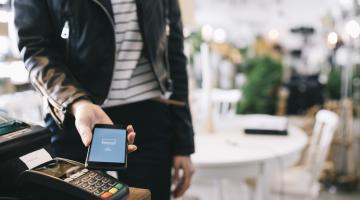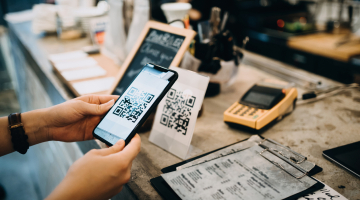
In recent months, WGSN has heard from clients across the globe about its “Future Consumer 2023” report. It’s not just that the findings were remarkable; it’s that they were also highly relatable.
“We’ve had clients from Cape Town to Tokyo that have sent a personal message saying they’ve felt seen and were happy (but sad!) to put a name on the emotions,” says Andrea Bell, director of insight for the trend forecasting authority, who presented a session on the white paper at NRF 2021: Retail’s Big Show – Chapter 1.
Emotional plurality — occupying multiple emotional states simultaneously due to an ever-changing and increasingly complicated world — was one of the more relevant feelings.
Learn more about the future of the consumer and evolving shopping habits post-pandemic here.
How on earth are brands to navigate that?
The good news is that, in addition to highlighting consumer sentiments expected to have global impact into 2023, the report included strategies for engaging future consumer profiles. Those profiles include: the Predictors (wanting stability and security thanks to economic uncertainty, emotional fatigue and a warped sense of time); the New Romantics (fueled by a deep need to reconnect with their emotions); the Impossibles (an activist cohort that looks to build back better); and the Conductors (thrill-seeking consumers and seeking “high-sensorial moments”).
As for the report’s recommended strategies? Those include refillable in-store tech, subscriptions and pre-order/made-to order retail for the Predictors. Mood-altering enhancements, rituals and emotional hygiene for the New Romantics. Transcultural products, appreciation of essential workers and direct-to-consumer marketplaces with opportunities to invest in businesses for the Impossibles. And gamified retail, virtual gifts and new “third-space realms” where consumers will communicate, play, shop, learn and work for the Conductors.
Seamless savings and third spaces
The retail landscape has already taken note. “The forecast is designed for these strategies to be at mass in 2023, but we can already see early stages of investment depending on the region,” Bell says.
“As highlighted in the seamless savings strategy for connecting with the Predictors (a time-pressed, emotionally fatigued cohort who desires stability and security), Capital One recently unveiled Capital One Shopping, a tool that instantly checks for coupons and discounts across 30,000 retailers. This cohort is price-savvy, but lack of time means that any seamless savings built into the customer journey will result in higher conversions.”
Further, there’s one prediction in particular that has continued to grow — even though it was considered laughable by many in 2019: the rise of the metaverse and virtual worlds.
“WGSN had been tracking ‘third spaces’ for a time and predicted pre-pandemic, younger generations including Gen Z would gravitate and shop in branded and/or experiential worlds,” Bell says. “Cut to 2021, and numerous brands are testing the waters. From Bvlgari's recent VR experience to launch its newest men's fragrance to Pangaia creating a microsite to transport customers to the Antarctic wilderness — these metaverses are driving ecommerce.
“Shopify reported that interactions with AR content and microsites resulted in a 94 percent higher conversion,” she says. “The rollout of 5 and 6G will continue to smooth out the experience and increase customer uptake. This is really the tip of the iceberg as there are endless possibilities for entertainment.”
Bell points to K-pop band BTS’s use of augmented reality/extended reality for recent performances; close to 1 million people worldwide viewed and interacted during one of its virtual events in October. Big Hit Entertainment, the South Korean company behind BTS, partnered with live streaming solution provider Kiswe Mobile earlier in the year to help heighten the experience and engage the audience.
“In a society where we are seeking connections and brands are looking to truly engage with their shoppers in an authentic way, the possibilities for strategic partnerships are endless,” Bell says.
Solutions to stress
Now that we’re in a new year — but still dealing with many of the same challenges — Bell gave thought to what parts of the research she might update/amend. First, she says, “We are seeing some of the key strategies being accelerated.”
“Pre-orders are continuing to be tested and consumers are actively searching for brands that have this service,” she says. “One of the greatest drivers of customer stickiness is stock availability. This cohort dreads the ‘item currently unavailable’ message, and is taking to inventory apps such as zooLert and NowInStock. Pre-orders are a way to eliminate anxiety for the Predictors, and also offer a sustainable alternative to over-production and deadstock.”
Explore the latest emerging consumer trends here.
In addition, she says, “subscription plans continue to soar and will remain a key option in 2023 and beyond. Knowing there is a set delivery helps build routine, while bundled services combat neural or choice fatigue, and of course there is the ‘dopamine delivery’ research suggesting there is a chemical pay-off, where opening a box releases dopamine, creating an instant spike of satisfaction.”
One other item of note, specifically for wellness, active and beauty companies: “There is a real opportunity for psychedelic solutions and emotional hygiene,” Bell says.
“As the psychedelic wave snowballs into a science-backed and socially acceptable market, consumers are reaching for mood-altering and sensorial enhancements. In short, after the pandemic where numbness and dissociation became a coping mechanism, people want to feel again. The importance of mental and emotional hygiene has arisen during the pandemic and we will see new solutions for dealing with stress, anxiety, insomnia and disconnection.”
Apparently, we’re all going to need it. As the report notes, social jet lag — a term coined by neuroscientist and chronobiology professor Dr. Till Roenneberg to describe the impact of sleep patterns that vary during work and leisure times — has been accelerated during the pandemic. As boundaries between leisure, work and social times have disintegrated, many have been left exhausted and with poorer health.
“The aspects of social jet lag and the growing attention divide continue to drive me to dig deeper,” Bell says. “I'm a real geek around neurology and psychographics and knowing the capacity (and fragility!) of our brain and emotions is often my research happy space.”


